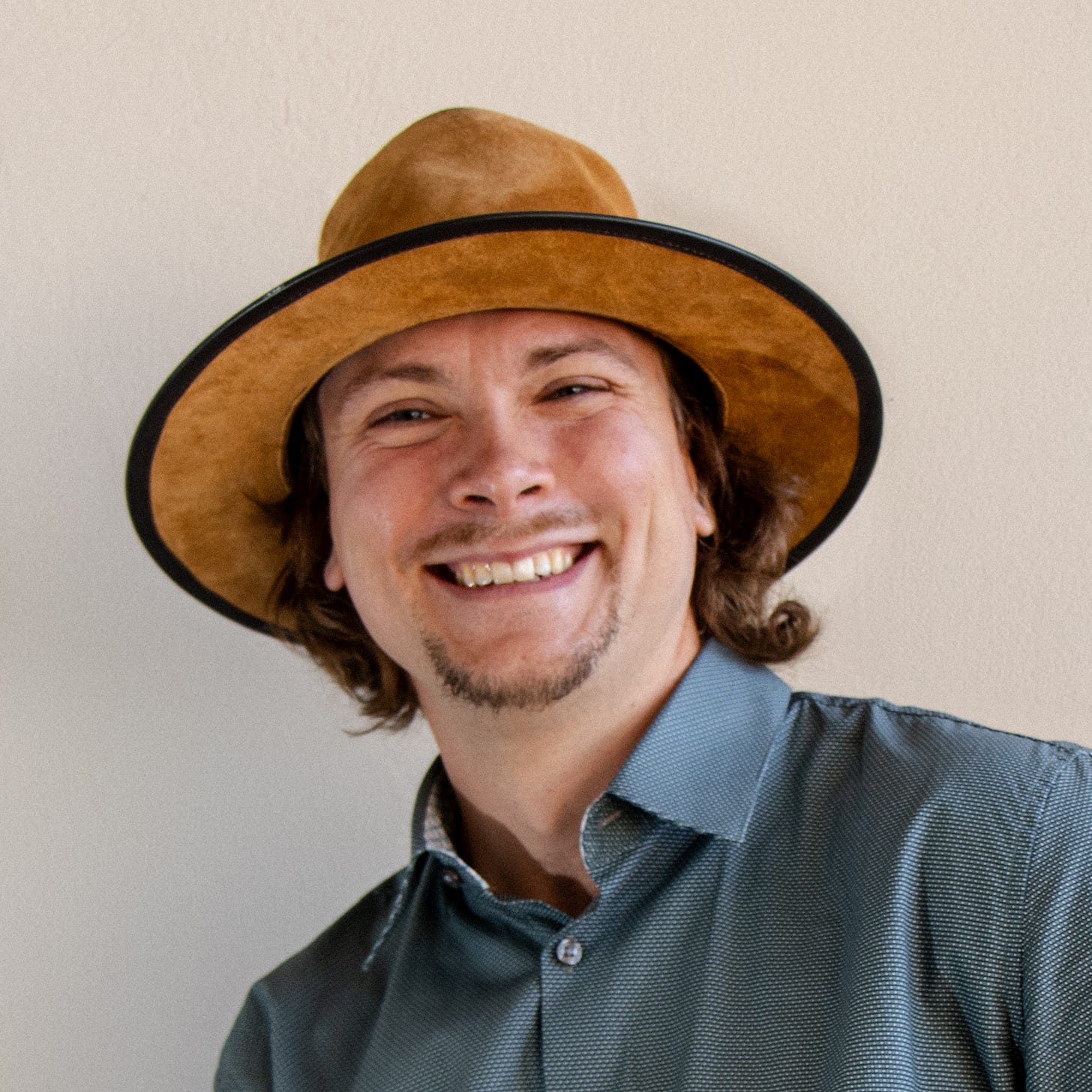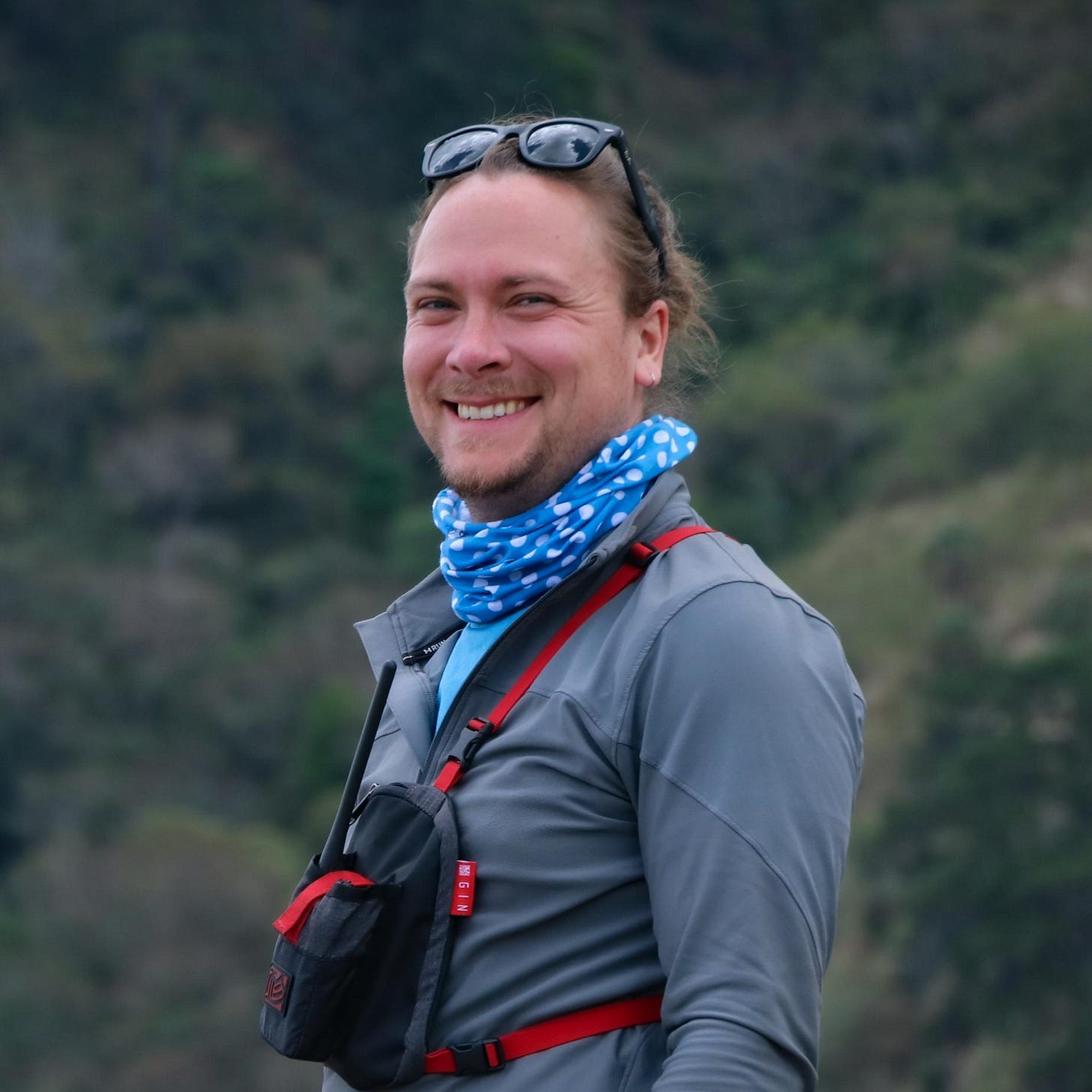Interview: Jacob Kalmakoff
Introducing a new Unflappable contributor
The subject of today’s piece is a pilot and writer I first met via email. When I learned that he was interested in the storytelling aspect of paragliding and had writerly ambitions, I suspected that we might become creative partners. It’s tough to overstate how thrilled I am to have Jacob on Team Unflappable, and I’m looking forward to sharing his work with you all.
This interview has been lightly edited for length and clarity.
Jonathan A. Hutton: Tell us the story of how you found flying; or perhaps how flying found you.
Jacob Kalmakoff: My whole life I’ve wanted to fly.
One of my earliest memories involves commandeering massive cardboard boxes, folding them over wooden yardsticks, and cutting and taping them into vaguely wing-shaped contraptions. I would then sprint down the nearest hill at full speed, desperate for a few fleeting seconds of weightlessness. Spoiler: it never worked. But the bruises were character-building.
When we took road trips along Highway 1 just east of Vancouver, I’d see paragliders soaring above Bridal Falls and think how literally out of reach they were. I was a kid with too many hobbies and interests, never able to settle on one. I didn’t grow up in an outdoorsy or sporty family, and I tried to be pragmatic—which meant flying remained firmly in the “nice fantasy” category.
Fast forward to 2017, and I’d finally reached a point where I could swing the purchase of my first equipment. There was just one minor problem: I was living in Kenya, several thousand miles from the nearest formal paragliding school. Undeterred (or perhaps just stubborn), I got in touch with the local Gin dealer—a brand I knew from my time in South Korea—who connected me to Veit Kessen, head of the Kenyan Paragliding Association.
I invited him out for a beer, and he gave me the complete download: weather, wind, gear, how it all works, what’s important, even relevant podcasts. I’ll never forget that hour. It absolutely blew my mind, and I still refer back to those notes today. Armed with this knowledge and questionable judgment, I proceeded to order gear for what would be an absolute steal by today’s standards. Two months later, the package arrived at Kenyan customs in Nairobi, and my girlfriend at the time (now wife) graciously went to pick it up, her UN ID affording her certain tax-free privileges. She’s never let me forget this favor.
Veit agreed to take me on as an informal trainee. He was German-schooled and, as expected, hyper-focused on safety—which I greatly appreciate to this day. For the entire first year with gear, I was limited to ground handling and bashing my wing about on the dusty red dirt of Nairobi’s suburbs. It was humbling, character-building, and occasionally rage-inducing. But it was also exactly what I needed.
Since then I’ve flown in many countries around the world, each affording me new perspectives on safety, launch techniques, and the delicate art of parawaiting. I still clip into my wing the same way Veit taught me—not because it’s necessarily right, but because it’s what I’m comfortable with and muscle memory is a powerful thing. So I guess it’s fair to say that despite my early interest and cardboard experiments, eventually the stars aligned and flying found me. It just took a few decades and a detour through East Africa.
JAH: The vast majority of paragliding stories we read follow the same formula, which is:
We set out to do the thing
We went to the place. Wow! (And check out these pictures!)
It was tough, but damn, we did the thing (see, look at the stats!)
And then we celebrated. The end.
Not a whole lot of emotion, reflection, or dialogue. The big achievements are cool and all, but I’m more interested in what you learned, how you changed, and in general that’s absent. What are you trying to change in how you write about our sport?
JK: Paragliding is an intensely personal experience, and as the number of pilots logging hundreds of hours per year increases, so does the volume of these formulaic stories. Perhaps the sport’s nature invites this: travel to faraway places offers opportunities for intercultural connection. International competitions and tours enable pilots to travel beyond their home continent for the first time. For many, this standard narrative reflects genuine first experiences—and there’s nothing wrong with that. We’ve all written that “I flew 100km and it was epic” post. Some of us have written it multiple times with only the location changed.
As pilots progress and accumulate more diverse experiences, they cultivate richer, deeper understandings of what the sport actually affords us beyond kilometers and personal bests. But here’s the thing: self-reflection is hard. Like all sports, paragliding tends to stroke the ego. Who’s flown furthest? Who broke that record? Who had the most spectacular bomb-out? It’s easier to post the GPS file than to examine why you took that last glide when every cell in your body was screaming “land now.”
What I’m trying to bring to writing about flying is the common experience—one that can be appreciated by pilots and non-pilots alike. It’s that right-brain activity, that sense of being intensely present in the moment, which is simultaneously individual and universal. The more we write about these experiences honestly—including the fear, the doubt, the moments when everything goes sideways—the more we understand that everyone has the potential to experience this. We’re all part of a collective consciousness existing on our improbable little planet, and sometimes the best stories aren’t about the flights that go according to plan.
JAH: You’ve been flying for a while now—how has it changed you?
JK: Flying has undoubtedly made me a more grateful person. Every time I take off and safely land, I’m thankful that my brain, limbs, and body made the right choices in the air and reacted appropriately. It’s an experience that humbles you and reminds you exactly how fragile we all are—especially when you’re dangling beneath 30 square meters of ripstop nylon 2,000 meters in the air.
When I used to do theatre, I’d get stage fright, those pangs of healthy anxiety pulsing through your nervous system before a performance. Remembering your lines, blocking, cues, movement—it’s all similar in the air, except you’re your only audience and “break a leg” is suddenly very literal. While that may seem dramatic, that constant awareness of risk drives me to be more focused. This is exactly how I fly now. Those same nerves hit me right before takeoff and occasionally on tight landing approaches. Trying out a new wing or flying an unfamiliar site brings back identical feelings, which 98% of the time lead to blissful, almost meditative focus. The other 2% is pure, unfiltered panic, but we don’t talk about that much.
Paragliding continues to force me into value judgments about other aspects of life: spending perhaps more money than I should on gear and experiences, sacrificing time from other important areas to chase flyable days, and trying not to expend all my energy in the daily hustle so I have enough left to be truly present in the air. When I’m flying, I’m in a meditative state. Yes, I occasionally listen to music or send voice notes or record video—we’re all guilty of this—but fundamentally, I’m fully present. These moments feel increasingly precious and fleeting in our complex, hyperconnected world. Flying has given me this perspective: that being present, being genuinely focused on one thing at a time, might be the most radical act available to us.
JAH: You and I have this crazy idea of combining writing and flying into a multi-day event. Give our readers the elevator pitch.
JK: There are countless paragliding tours, groups, and clinics out there now—and they’re mostly great. But we thought: what if we combined flying with a creative outlet that doesn’t involve posting the same “epic day!” caption for the hundredth time?
Enter our concept: a flying event where parawaiting is more than an opportunity to obsessively check weather forecasts and argue about wind models. Instead, it becomes a chance to reflect, process, and craft stories that articulate the diverse experiences this sport affords us. It’s a work in progress, but our theory is that after a long day of flying—or not flying—it’ll be fascinating to see what creativity the exhausted brain can produce.
Maybe we’ll find a mandatory top-landing site where pilots can immediately park it and, with inspiration fresh from the flight, dive straight into the writing trenches. Perhaps we’ll give everyone little voice recorders to attach to their lines so when inspiration strikes mid-thermal, they can capture it in real-time—creating either profound insights or unintelligible rambling about cumulus spacing. Probably both.
The goal is for it to be grounding and helpful for pilots to process some of the deep experiences flying brings. Because let’s be honest: most of us process these experiences by saying “that was gnarly” and cracking another beer. There’s room for something more.
Stay tuned. We’re either onto something brilliant or we’re about to discover why nobody’s done this before.
JAH: Most of my readers know I plan to write more books, that I’d like to dedicate more of my life to that work. What about you, what are your writerly ambitions?
JK: Perhaps the red thread running through all aspects of my life is my passion for shared experiences—creating them, facilitating them, and documenting them. This manifests through writing, organizing events, fundraising, and research. For now, I’m drawn toward short-form essays, flight logs, and deep-dives into topics I care deeply about. I like to think this reflects who I am: a person with varied interests that are at times fleeting, at others obsessive, and occasionally both simultaneously.
My mission is for paragliding to not just exist in a bubble—I want to bring non-pilots into the conversation, give communities that support flying opportunities to grow sustainably, and enrich the ecosystems we touch. I’m deeply concerned with the unconscious impacts we have on our planet and on people whose livelihoods depend on the land we fly over.
Beyond the obvious impacts—petroleum-based materials for gear, flying on airplanes to competitions—the hours we spend actually in the air might be some of the most genuinely low-impact moments we can have as pilots. Free flight puts us closer to nature in ways few other activities can. Even bombing out in a remote field can lead to an unplanned adventure that fundamentally changes your perspective. For me, writing is one way to bring this awareness to pilots, free flight communities, and the places where we’re guests.
Also, I’d like to write something that doesn’t involve explaining what a thermal is to my relatives. That’s the dream.
JAH: We’re excited to have you here, to feature your work. Anything you’d like to add?
JK: Thanks, Jonathan! It’s an honor to be part of Unflappable and contribute to what you’re building here. And huge congratulations on publishing your first book—that’s no small feat, especially when you’re also trying to log flight hours and maintain some semblance of a normal life.
I’m excited to get deeper into the writing trenches with you. Let’s see if we can convince people that parawaiting is actually productive and that spending three days not flying can make for a better story than flying 200 kilometers. It’s a tough sell, but we’re optimistic. And we’ll definitely have to invite you down to Honduras for the Paragliding Festival next year.
And to your readers: if you’ve made it this far, thank you. May your thermals be strong, your collapses be minor, and your landing fields be plentiful. See you on the ground—where, apparently, all the best stories happen.






